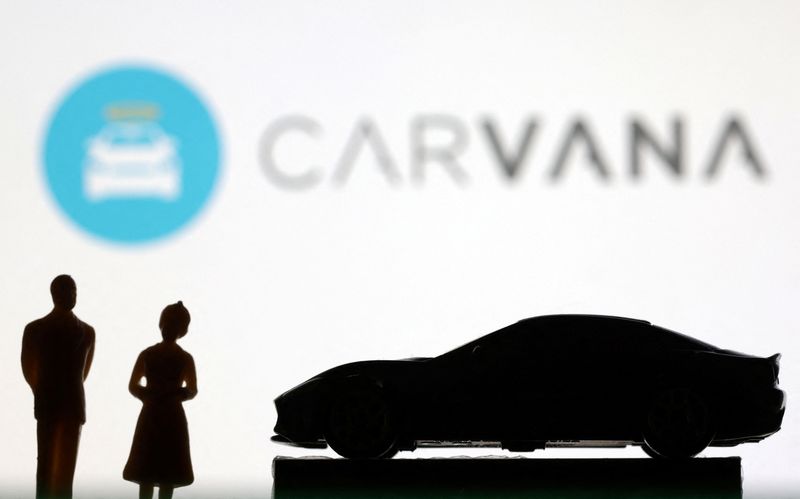(Reuters) -Carvana forecast annual core profit above analysts' expectations on Wednesday, driven by strong demand for its used vehicles and improved inventory management, which helped the used-car retailer protect its margins.
Shares of the company were up 11% in aftermarket trading.
During the pandemic, used car retailers such as Carvana increased their vehicle inventory, often buying at inflated prices due to skewed new vehicle supply.
However, as new vehicle productions normalized, Carvana struggled to clear its inventory of used cars forcing it to sell them at prices lower than acquisition costs and impacting margins.
Carvana, best known for its vehicle vending machines, has been working to improve margins and return to profitability.
Earlier this year, it reported its first-ever annual profit and has since been reducing inventory and cutting advertising and other expenses to strengthen its balance sheet.
The company now expects its 2024 adjusted earnings before interest, taxes, depreciation, and amortization (EBITDA) in the range of $1 billion to $1.2 billion, compared with analysts' average estimates of $890.97 million, according to LSEG data.
"We not only led the industry in retail unit growth, which accelerated from Q1, but also delivered 1.4% net income margin and a new record 10.4% adjusted EBITDA margin, which sets an all-time high water mark for public automotive retailers," CEO Ernie Garcia said.

Total retail units sold in the second quarter rose 33% to 101,440 and with the company expecting this number to rise sequentially in the third quarter.
Carvana reported a net income of $48 million or 14 cents per share, for the second quarter ended June 30, compared to a net loss of $105 million, or 55 cents per share, a year earlier.